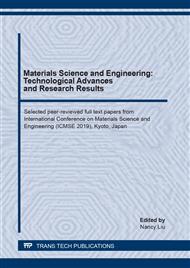p.47
p.57
p.65
p.76
p.85
p.93
p.101
p.108
p.116
Utilization of Spent Coffee Ground Oil in Eco-Friendly Scouring and Reactive Dyeing Processes for Cotton
Abstract:
In this research, utilizing of Arabica spent coffee ground oil was investigated for textile processing applications including scouring and reactive dyeing for cotton. The spent coffee ground oil was extracted using hexane and its chemical compositions were analyzed. The synthesized biosurfactant from spent coffee ground oil was investigated for use in cotton scouring. The results showed that the biosurfactant could well work as a scouring agent for cotton. Much better water absorption and reduced yellowness on cotton were achieved but higher applied concentration was needed as compared with the commercial wetting agent. It was also found that scouring efficiency of the biosurfactant could be promoted by adding alkali i.e. sodium carbonate, into a scouring bath, resulting in a satisfactory scouring level. A study on utilizing spent coffee ground oil in reactive dyeing process informs that by incorporating the oil into an aqueous dyebath to create oil/water dual-phase dyeing system, the dye exhaustion and color yield of Reactive Red 120 dye obtained on cotton could be enhanced without adding salt. This promotes a development of salt-free reactive dyeing process.
Info:
Periodical:
Pages:
85-92
Citation:
Online since:
August 2020
Keywords:
Price:
Сopyright:
© 2020 Trans Tech Publications Ltd. All Rights Reserved
Share:
Citation:


